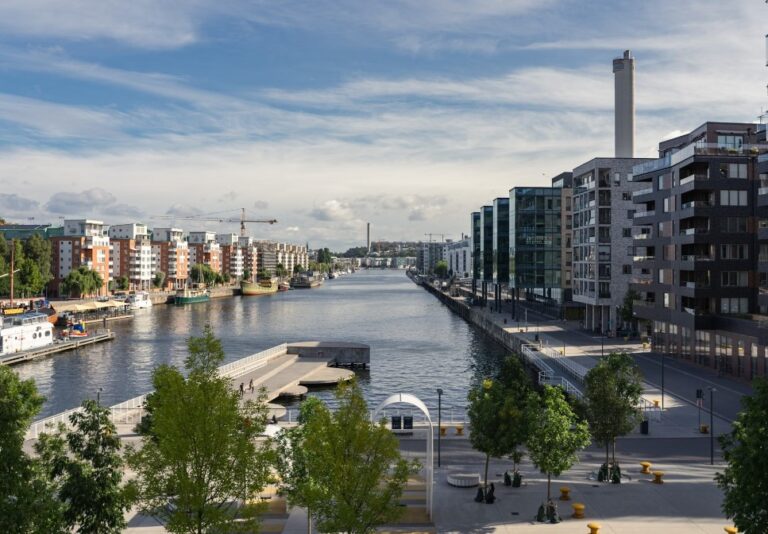There’s been a lot of talk about urban regeneration lately but are you sure you know what it’s about? All actions focused on the redevelopment of a space, perhaps disused or very degraded, not necessarily only in a physical sense, but also on a social and environmental level, within the city.
The redevelopment also places particular attention on sustainability and green building. Let’s take a closer look at what it is and some concrete examples in which it has been successfully applied.
Table of Contents
What is meant by urban regeneration
It is a process of redevelopment of urban areas that are already built, degraded or in a state of semi-abandonment, characterized by low real estate values.
It is carried out with various actions, from urban planning policies aimed at the recovery and redevelopment of these city spaces, to the financing of the project, up to its construction. And it is seen in various land redevelopment programs as an excellent remedy for the urban and social degradation of certain urban areas.
Typically, urban renewal operations take place in places that planners and local governments consider to be ‘slums’ or with low-quality or no infrastructure, and which are experiencing urban decay. Development can take the form of new businesses, residences or services.
What is the meaning of urban regeneration
These interventions include recovery activities of infrastructures and services, expand situations in which there is a limitation to the use of the territory and give greater protection to environmental sustainability.
Regenerating a neighborhood or a city area allows the community to reclaim and renew spaces, with evident improvements in the quality of life and in the social, economic and environmental sphere.
The objective is to contribute to making cities more sustainable and more human-scale, counteracting the frenetic and indiscriminate use of building land consumption, an increasingly strong trend, which has heavy repercussions on the geo-morphological balance and makes the areas faced with risks of hydro-geological instability are more vulnerable.
What can be done with urban regeneration
The regeneration initiatives in practice follow various lines, through specific projects and targeted and dedicated investments. It starts from:
- create public transport hubs;
- create new green areas and public parks;
- recover disused building areas;
- improve the energy efficiency of existing building stock;
- transform degraded and obsolete neighborhoods into economically productive areas for the community;
- promote social housing and co-housing to deal with housing hardship situations;
- physically redevelop public and private buildings while always taking into account cultural heritage;
- dedicate economic incentives to encourage entrepreneurial activities.
How to do urban regeneration
This process has no universal and predefined rules and must adapt to each specific situation. It occurs, in fact, through the creative and modern recovery of built-up areas that are disused and little exploited.
These areas are redeveloped in compliance with environmental sustainability, encouraging the use of eco-compatible materials and renewable energy resources.
The actors involved are not only experts and expert workers in the construction field, but all the social components and associative realities. Let’s think, for example, of cooperatives active in a local context, and of voluntary groups or local associations.
This regeneration can also be a vehicle for:
- promotion of social inclusion policies, and driving employment and the involvement of local entrepreneurs;
- opportunity to give cities a new look, thus relaunching their image in the area;
- reason for cultural, economic and social revaluation with attention to environmental aspects.
When was this concept born?
In reality, this concept seen as modern has ancient roots. It was born in England in the Victorian age, as an attempt to resolve and improve the terrible living conditions in cities that had become unhealthy and unlivable due to unbridled and unregulated industrialization, linked to an economic liberalism that was still poorly regulated.
A similar phenomenon, but born of different needs, occurred in 1853 in France, when Napoleon III hired Baron Haussmann for the aesthetic redevelopment of Paris, a process that had an enormous impact on the history of the city and its appearance, as well as on its urban planning setting.
Even today, the urban regeneration of city areas is a very widespread technique used in both developed and developing countries.
It is often implemented on the occasion of events of global importance that take place in these nations to give new life to entire neighborhoods.
What is the difference between redevelopment and urban regeneration
The recovery of disused or dilapidated built-up areas to give them new life can be done through building renovation, paying attention to environmental sustainability and using eco-compatible materials, with the ultimate aim of limiting land consumption.
Regeneration is a 360° concept that does not only take into account redevelopment. The idea is to give new life to communities, so that they can reclaim these regenerated spaces, achieving a better quality of life, both on a social and economic level.
Read also: Stockholm Wood City: from Sweden the world’s largest wooden neighborhood












